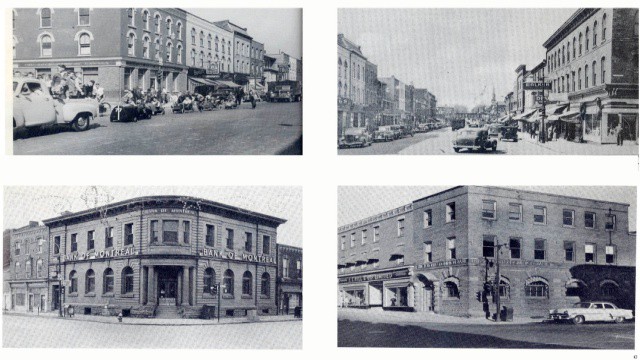5 Oldest Neighbourhoods in Brampton
Published December 7, 2018 at 7:27 pm

Brampton has an incredibly rich history — Chinguacousy Township was first surveyed in 1819, settled by immigrants from Brampton, Cumberland, North England. John Elliott applied the name Brampton to the land in 1834, and the city has been through war, hurricanes, and architectural development since.
That said, there are certain neighbourhoods in Brampton that have been around much, much longer than others. In fact, there are communities still standing that have been around since 1815 — 200 years ago — according to the Peel Art Gallery Museum and Archives (PAMA).
Note that first three neighbourhoods on this list are listed in no particular order. Downtown Brampton encompasses several of the oldest areas in Brampton, dating back to the 19th century, and which ones were the earliest are currently unable to be confirmed. This map depicts all of the oldest neighbourhoods located in downtown Brampton for reference:

Map courtesy of PAMA, Heritage Conservation District Feasibility Study
Brampton’s history is so old and rich and there were once neighbourhoods here for which no trace now exists, like Broddytown, Nortonville, and Claireville (though some names have been repurposed for current use, like Claireville Conservation Area!).
Here are five of the oldest neighbourhoods that are still standing in our city!
5) Nelson Street West (mid to late 19th century/early 20th century)
The Nelson Street West neighbourhood encompasses single-deatched houses and a few semi-detached houses, ranging from cottages to mansions. Here, you’ll still find classic Ontario cottage-style buildings near Italianate mansions, semi-detached homes with roughcast plaster, a large Regency house, and a Second Empire mansion perched on an old western bank of the Etobicoke Creek, according to PAMA. From Elizabeth and Railroad, the spire of Christ Anglican Church is visible, which was the neighbourhood’s main institutional landmark. The Nelson West neighbourhood extends west to Park Street which runs parallel to the historic Credit Valley Railway.
4) Central School neighbourhood (19th/early 20th century)
A mix of single-detached homes remain in Central School neighbourhood, encompassing three major landmarks in the area: Central Public School, St. Andrew’s Presbyterian Church, and Grace United Church at the northeast, southeast, and southwest poles of the neighbourhood, respectively, according to PAMA. Now, in this area from Church Street East, look east and instead of blank sky you’ll find a high-rise building just outside of the neighbourhood! Ah, how times have changed.
3) Civic, religious, and commercial heart of old Brampton (19th century)
Complete with commercial streetscapes, and civic and religious landmarks, this area is very close to the Four Corners at Queen Street and Main Street. This is very much still near the heart of downtown Brampton. A row of commercial buildings along Main Street South and another along Queen Street East still stand from the 1800s. PAMA itself is also in this neighbourhood, which used to be the Peel County Courthouse, Registry Office, and Jail. Here, you’ll also find a civic precinct on Chapel Street that served as library, firehall, and armouries, and St. Paul’s United Church and First Baptist Church. As for residential buildings, there are a few, including a Queen Anne house near City Hall.
The following two oldest neighbourhoods in Brampton are not located in downtown Brampton:
2) Huttonville (1820s)
Nestled into Mississauga Road Queen Street East/Embleton Road, Huttonville is something of a relic in Brampton. It’s a rural community and always has been, known to some as a “lost village“. When you think of Huttonville now, you likely think of lots of greenery, hidden homes, farms, pie, and apple picking, and you’re not wrong to think of the historic community that way — that’s what it seems to be now. According to Spacing Toronto magazine, James Hutton bought the mills in the area and renamed the settlement Hutton’s Mills (which is where “Huttonville” comes from) in 1855, encompassing a post office and a volunteer fire station also in the area. Now, you’ll mostly find nursery greenhouses (we are the Flower City and greenhouses are some of the remnants of our bustling flowery industry), a rural elementary school, apple orchards…and some huge hidden houses. It’s hard to believe that this is a part of Brampton — and also really fascinating!
1) Churchville (1815)
That brings us to what might be the oldest still-standing neighbourhood in Brampton. Churchville is a heritage community and a rural area in the southwest corner of Brampton, founded by Amaziah Church (1766-1831) who built a gristmill on the Credit River, according to Spacing Toronto magazine, which also names Churchville as another “lost village” in the Greater Toronto Area. This area was once part of Toronto Township, York County, and the original town surrounded the floodplain of the mill. Though many of Churchville’s old structures no longer exist, of the course of 200 or so years it has been home to a slaughterhouse, a tannery, a schoolhouse, a wooden boardwalk, several churches, small hotels, and a cemetery. Some buildings have survived and are now designated heritage homes here in Brampton.
Bonus: The Four Corners (1830s)
Featured in our cover photo, the Four Corners began as a crossroads hamlet known as “Buffy’s Corners” after William Buffy’s Tavern, located at the north-east corner of the intersection. Buffy’s Corners then and The Four Corners now, this intersection has remained the heart of downtown Brampton. Lots were sold in the area beginning in 1834, subdivision plans were laid out from 1850-1884, Haggert Foundry, the Dale Estate Nurseries, and the Grand Trunk Railway were introduced in the mid-1800s, and after 1867, civic buildings and homes were built. The city really blossomed around this very old area.
— With files from PAMA
INsauga's Editorial Standards and Policies